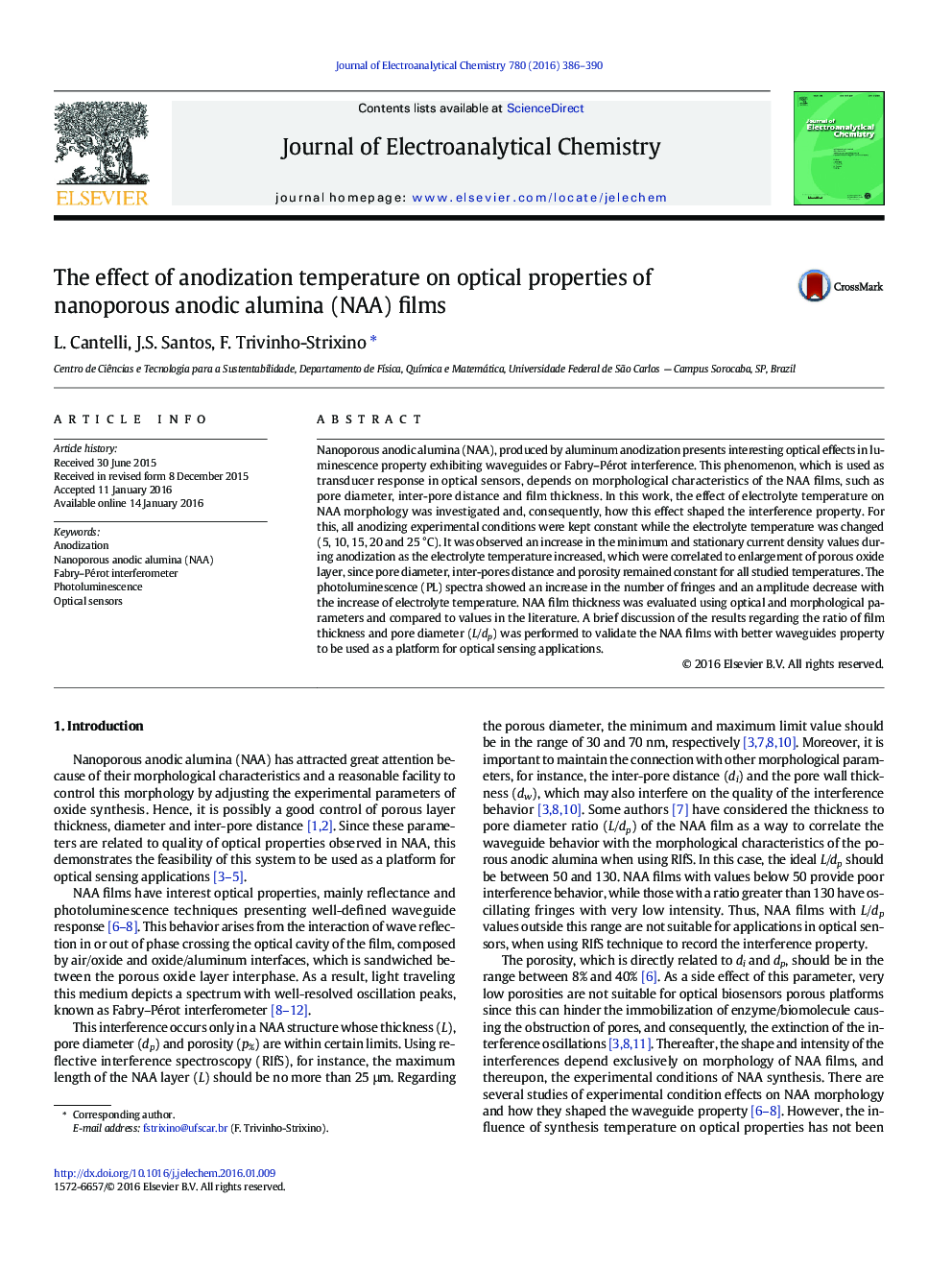| Article ID | Journal | Published Year | Pages | File Type |
|---|---|---|---|---|
| 6477234 | Journal of Electroanalytical Chemistry | 2016 | 5 Pages |
â¢Nanoporous anodic alumina (NAA) films were produced by Al anodization.â¢NAA presents Fabry-Pérot interference as responses to photoluminescence technique.â¢Anodization temperature influences the optical properties of NAA films.â¢The film thickness was evaluated using optical and morphological parameters.
Nanoporous anodic alumina (NAA), produced by aluminum anodization presents interesting optical effects in luminescence property exhibiting waveguides or Fabry-Pérot interference. This phenomenon, which is used as transducer response in optical sensors, depends on morphological characteristics of the NAA films, such as pore diameter, inter-pore distance and film thickness. In this work, the effect of electrolyte temperature on NAA morphology was investigated and, consequently, how this effect shaped the interference property. For this, all anodizing experimental conditions were kept constant while the electrolyte temperature was changed (5, 10, 15, 20 and 25 °C). It was observed an increase in the minimum and stationary current density values during anodization as the electrolyte temperature increased, which were correlated to enlargement of porous oxide layer, since pore diameter, inter-pores distance and porosity remained constant for all studied temperatures. The photoluminescence (PL) spectra showed an increase in the number of fringes and an amplitude decrease with the increase of electrolyte temperature. NAA film thickness was evaluated using optical and morphological parameters and compared to values in the literature. A brief discussion of the results regarding the ratio of film thickness and pore diameter (L/dp) was performed to validate the NAA films with better waveguides property to be used as a platform for optical sensing applications.
Graphical abstractDownload high-res image (118KB)Download full-size image
